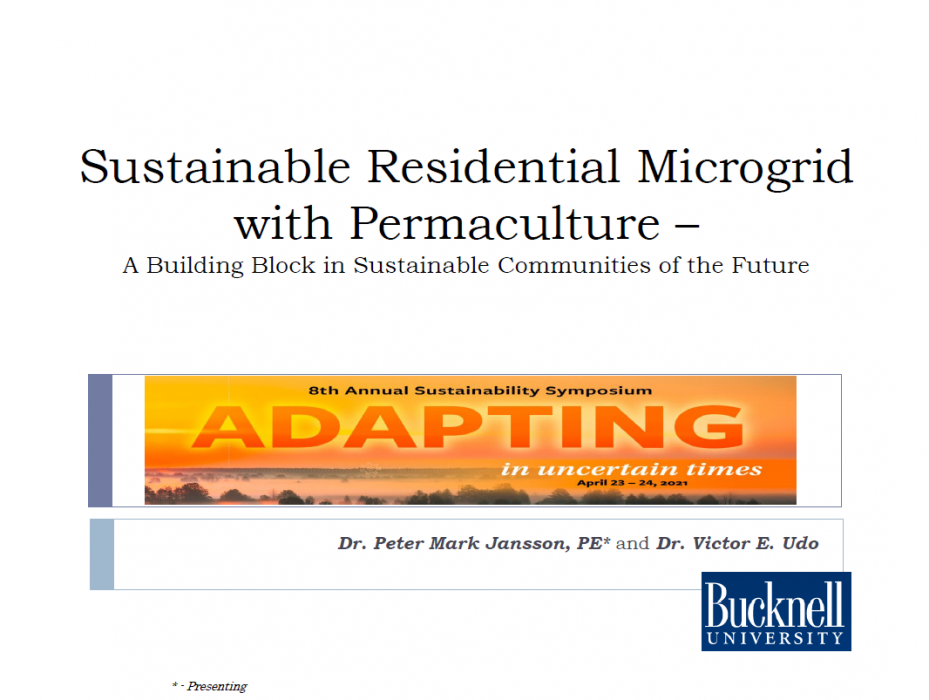Author:
Peter Jansson
Co-Authors:
Victor Udo
Institution:
Bucknell University
Abstract
Established initially as a research station by the Bucknell University Sustainable Energy Research Team (BUSERT), the microgrid was created to demonstrate off-grid operation of a residential home using the power systems of a PV Array and natural gas generator to supplement typical grid power. Over the past six years the microgrid site has evolved to demonstrate more climate friendly alternatives to energy storage and to demonstrate the benefits of permaculture and organic practices that can be applied in to typical residential settings. The authors share the key elements of the systems employed at the site to decrease it’s carbon footprint overtime and to capture carbon in the process. The technologies include: electric hybrid transportation, photovoltaic array, ultra-high efficiency natural gas heating, load management control via the microgrid Raspberry-Pi, pyrolysis, pollinator gardens, perennial gardens, natural herb gardens and fruit and nut trees, organic compost supplementation and garbage/organics composting, rainwater capture, etc.
During the past few years the site has experienced increases in the insect (particularly bees), amphibian and small mammal populations as the landscape has become increasingly organic in nature. From a technology standpoint the microgrid has operational capability to pull power from the grid, send excess generation to the grid or operate in an islanding mode (without need for the grid). Taken in combination this installation has the ability to operate to minimize costs or to minimize carbon for the homeowner. It represents one small site which now demonstrates multiple ways that homes can contribute to reducing carbon in the future (through reduction in use or sequestering onsite) as well as becoming more self-sufficient in terms of the production of local organic produce for the occupants and their neighborhood.
